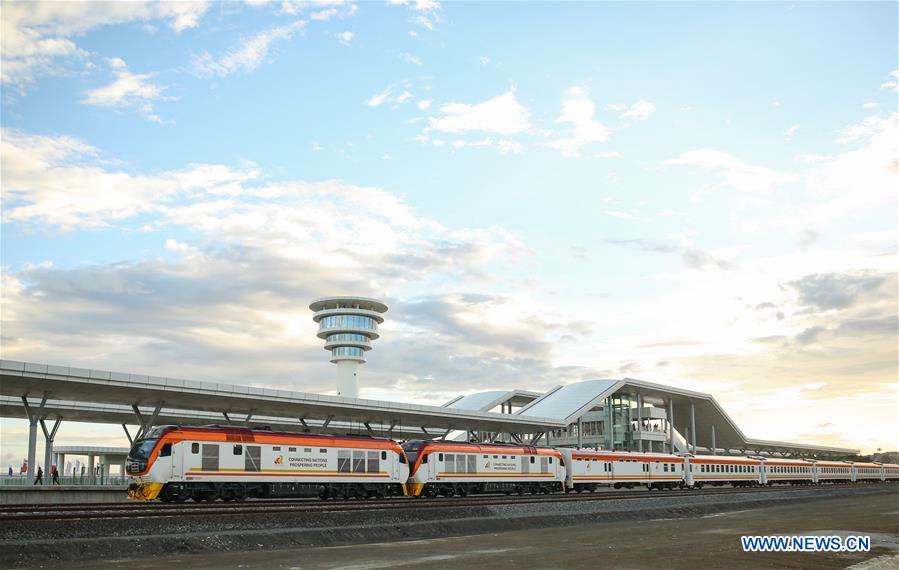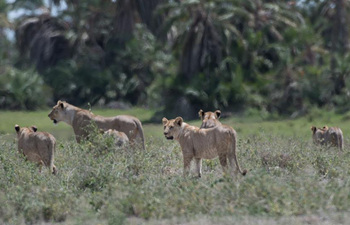
A train runs on Kenya's Mombasa-Nairobi Railway on May 29, 2017. The 480 km railway linking Kenya's largest port city Mombasa to capital Nairobi, slated to be officially launched on May 31, will be a key infrastructure project that will push forward the East Africa nation's modernization drive, a senior company executive said Monday. (Xinhua/Pan Siwei)
NAIROBI, May 30 (Xinhua) -- Kenya will begin operations on the Chinese-built Standard Gauge Railway (SGR) Wednesday in a drive to revolutionize its transportation sector and speed up industrialization. Xinhua offers eight sets of figures on what the railway is:
1. The 480-km SGR stretches from the port of Mombasa to Kenya's capital Nairobi, involving a total investment of 3.8 billion U.S. dollars, which makes it Kenya's largest infrastructure project since its independence.
2. Construction of the railway began in December 2014 with China Road and Bridge Corporation (CRBC) being the contractor.
3. The designed speeds for passenger trains on the SGR line are 120 km/h and 80 km/h for freight trains.
4. The SGR line runs largely in parallel with the Nairobi-Mombasa sections of the meter-gauge railway built between 1986 and 1901 during the colonial era.
5. The Kenyan government has anticipated the SGR to boost Kenya's GDP by 1.5 percentage points annually, promote industrialization and bring in investment along the route by reducing the cost of transportation.
6. The Mombasa-Nairobi SGR is the first step in the grand plan to build an East Africa railway network that will eventually link Kenya with Uganda, Rwanda, Burundi and South Sudan. An extension of the Nairobi-Mombasa line, the Nairobi-Naivasha SGR, has already begun construction.
7. About 120 km of the SGR run through Kenya's Tsavo National Park. The line features 14 wildlife channels to facilitate migration of wildlife in the areas.
8. The SGR project has created more than 46,000 jobs for locals and the number of local workers who received training has hit 45,000.















